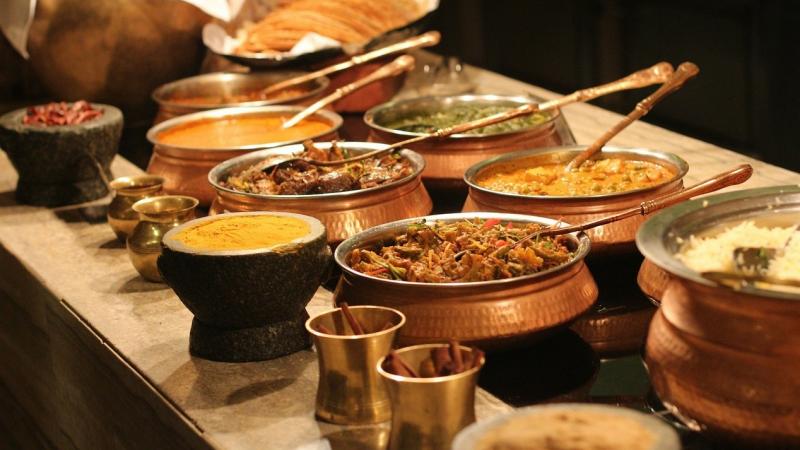
Researchers study the dietary diversity among Indian children based on their socio-economic status.
Our survival depends on the food we eat, which can be as diverse as one can think. Eating different varieties of food is often associated with good health, and a balanced diet is conducive for the development of the body and the brain. When there are insufficient quality and quantity of food, it can result in malnourishment, leading to stunted growth, especially in children, and other health-related complications.
In India, although several interventions like the Poshan Abhiyaan have been introduced to fight malnutrition, it is still persistent mostly in rural areas and among women and children. Besides, such programs focus on food quality and quantity, and little on food diversity. In a recent study, researchers from the Tata Trusts, Institute of Economic Growth, India and Harvard University, USA, have tried to understand how people's socio-economic status affect their food habits and the diversity of the food they eat. The findings are published in the European Journal of Clinical Nutrition.
The researchers used data from the National Family Health Survey 2015-16 (NFHS-4), which gathered information on population, health and nutritional status of people in 29 states and 7 union territories. They analysed nutritional data of about 74,000 children aged between 6-23 months, focusing on food consumed by the kids in the last 24 hours, as reported by their mothers.
The researchers divided the commonly consumed food items into seven groups based on the WHO guidelines. The first group, labelled ‘grains, roots, and tubers’, comprised of food like soup, broth, bread, tubers and other grains. Under ‘legumes and nuts’ were beans, nuts and lentils, while ‘vitamin A-rich fruits and vegetables” had carrots, squashes, green leafy vegetables and fruits like mangoes and papayas. ‘Dairy products’, ‘flesh foods’ comprising of meat, ‘eggs’, and ‘other fruits and vegetables’ were the other groups. If the children had food items from at least four of these groups, they were considered to have adequately diversified dietary intake.
The study found that out of seven groups, 74% of the children consumed ‘grains, roots and tubers’, followed by 55% who consumed ‘dairy products’, 37% ‘other fruits and vegetables’, 29% ‘vitamin A-rich fruits and vegetables’, 14% consumed ‘eggs’, 13% consumed ‘legumes and nuts’ and 10% consumed ‘flesh foods’.

Percentage consumption of different groups of food among children aged 6-23 months [Data Source]
Among specific food, the study found that the consumption of juice, fortified baby food and yoghurt was almost four times higher in the richest households compared to the poorest families. Similarly, twice as many children from the most affluent households consumed formula milk, soup/clear broth, cheese, yoghurt and other milk products compared to the most impoverished families.
There was also not much difference in the mean dietary diversity score between the rich and the poor households. A diversity score is a number between 0 and 7, assigned based on food consumption. A '0' means that the child did not consume any of the 21 food items, and a '7' means that the child had at least one food item from each of the seven food groups. The score was about 2.0 in the poorest households and 2.5 in the richest. Likewise, a total of 18% of the children from the most impoverished families consumed adequately diversified dietary intake compared to 28% among the wealthiest households.

Percentage consumption of different food types based on the household economy [Data Source]
Interestingly, the education level of the mothers positively correlated with the consumption of food items, especially the essential ones. For instance, a four-time-difference in the consumption of fortified baby food was seen between the children of mothers with no education and those with a high school-level of education or beyond. This difference dropped to three times in consumption of juices and formula milk and yoghurt, and two times in the intake of soup, fruits, fish, cheese, yoghurt and other milk products.

Percentage consumption of different food types based on maternal education levels [Data Source]
“We found that consumption of food items, such as pumpkin, carrots, squash, dark green leafy vegetables, liver, heart, other organ meat, fish, shellfish, legumes and nuts, and flesh food, was significantly associated with maternal education but not with household wealth”, say the researchers, stressing that maternal education may be more important than wealth in determining the diversity of food. “The consumption of food items that are relatively cheap such as pumpkin, carrots, green leafy vegetables can, therefore, be increased to enhance the diversity of food intake,” they suggest.
The study also has a few limitations. Children, who were not alive at the time of the survey, were excluded, and they possibly represented the most disadvantaged segment of the population. The 24-hour recall method, used in the study, is prone to errors. Besides, the NFHS-4 survey did not include analysing the consumption of recent, unhealthy food items apart from biscuits, which are commonly consumed by kids of that age.
The study shows that parents' education levels are insufficient to make the right dietary choices and that higher socio-economic group consumed more packaged food—a situation the researchers call 'alarming'. Exposure to the correct information related to balanced diet and nutrients is critical to make a nutritional transition in India, they say.
"Interventions designed to improve food consumption and diversified dietary intake among Indian children need to be more universal, given the overall high prevalence of inadequate dietary diversity", they conclude.






